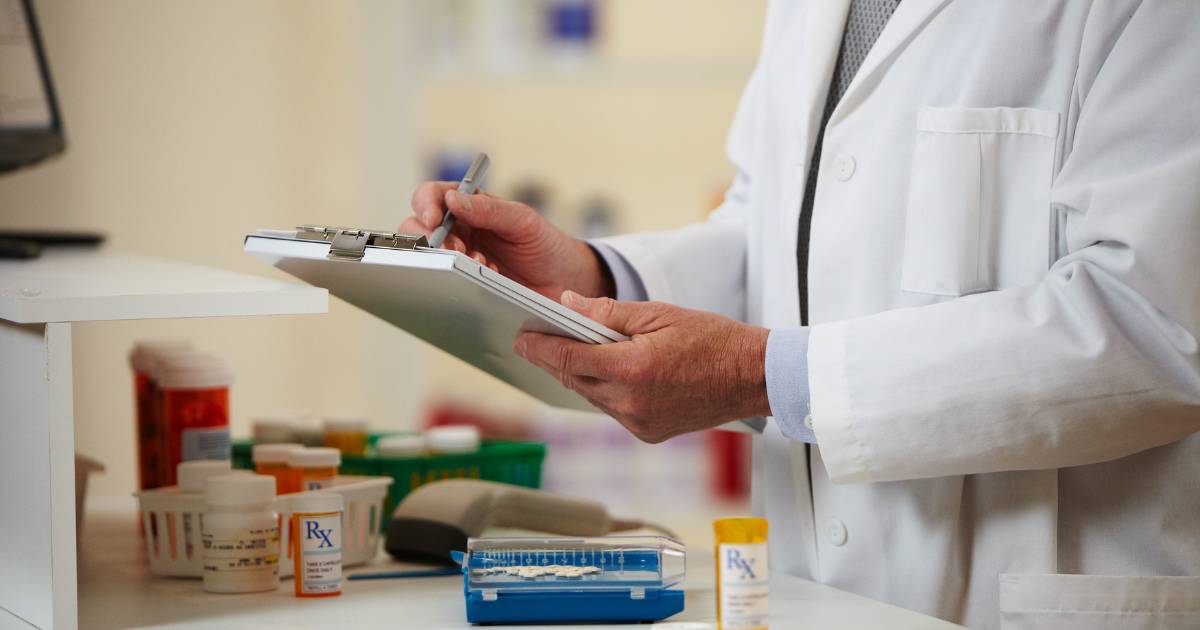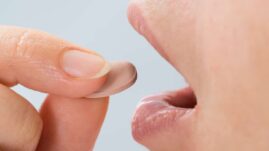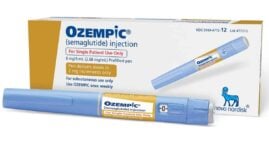1 in 3 American adults have prediabetes—it’s just that common!
A nutritious diet and increased exercise are some of the common ways that people manage their prediabetes.
However, sometimes people with prediabetes are prescribed medications to help lower their blood sugar levels and insulin resistance or to lose weight.
This article will explore everything you need to know about prescription medications that help treat prediabetes.

Table of Contents
- What is prediabetes?
- How do you manage prediabetes?
- What medications can you take for prediabetes?
- What is the best medication for prediabetes?
- What are the downsides of taking medications for prediabetes?
- If you take medications for prediabetes, can you ever stop?
- Can taking medications for prediabetes prevent type 2 diabetes?
- What is the best way to reverse prediabetes?
What is prediabetes?
Prediabetes is a diagnosis of blood sugar levels being consistently higher than normal, but not elevated enough to warrant an official diabetes diagnosis.
Without intervention, people diagnosed with prediabetes are at a much higher risk of developing type 2 diabetes.
Blood sugar levels to diagnose prediabetes are the following:
- Fasting blood sugar between 100-125 mg/dL
- Blood sugar 2 hours after a meal between 140-199 mg/dL
- An HbA1c test between 5.7-6.4%
Without intervention, prediabetes will usually develop into type 2 diabetes within a few years.
Read more: How often should you test for prediabetes?
How do you manage prediabetes?
Prediabetes is primarily managed through diet and exercise. The goal is to lose excess weight, improve insulin sensitivity, and delay or prevent the onset of type 2 diabetes.
The Centers for Disease Control and Prevention (CDC) recommends the National Diabetes Prevention Program (NDPP) as an effective way to help reverse prediabetes and prevent type 2 diabetes.
In a study, people who participated in the NDPP cut their risk of developing type 2 diabetes by 58% at the end of the program (and 71% for people 60 and older.)
If you’ve recently been diagnosed with prediabetes, work with your doctor or a registered dietitian to create a meal plan and exercise regimen that fits your lifestyle and health goals.
“Ever since I took the steps to make changes in my diet and lifestyle, my blood sugar levels have been in range and my A1c has been in the normal range for seven years straight!”
Venus Jones (read Venus’ story of reversing prediabetes)
What medications can you take for prediabetes?
While the first-line treatment for prediabetes is diet and exercise, some medications show promising results.
The following medications can manage, and even reverse, prediabetes and delay or prevent the onset of type 2 diabetes:
Metformin
Metformin is extremely effective at lowering blood sugar levels in people with prediabetes and diabetes. It may also aid in moderate weight loss, which can help prevent type 2 diabetes.
This affordable and widely accessible medication is well-tolerated by most people.
Research has shown that taking 850 mg of metformin twice daily can reduce the risk of developing type 2 diabetes by 31% over three years.
This reduction in risk was seen in both men and women but was less effective for people 45 years and older.
Metformin is most effective when combined with healthy diet changes and increased daily physical activity.
Glucagon-like peptide 1 (GLP-1) agonists
GLP-1 agonists are a popular injectable medication used to lower blood sugar levels in people with type 2 diabetes.
However, they are commonly prescribed “off-label” to people with metabolic syndrome and insulin resistance like prediabetes.
GLP-1 agonists, such as liraglutide and semaglutide, can improve insulin sensitivity, lower blood sugar and HbA1c levels, and aid in weight loss. This all helps to delay and prevent type 2 diabetes.
New research suggests that GLP-1 agonists can prevent the progression of both prediabetes and type 2 diabetes. In the study, 2,254 people with prediabetes were given 3.0mg of liraglutide daily for three years.
This resulted not only in substantial weight loss, but 66% of the participants had blood sugar levels return to normal.
Only 3% of participants in the liraglutide group went on to develop type 2 diabetes versus 11% in the placebo group.
Thiazolidinediones (TZDs)
TZDs are an oral class of type 2 diabetes medication that increases insulin sensitivity.
When prescribed off-label, TZDs can be used to treat prediabetes and help prevent the progression to type 2 diabetes.
However, they do not aid in weight loss—one of the main ways to help reverse prediabetes.
They are easily accessible and often more affordable than GLP-1 agonists.
Acarbose
Acarbose is an alpha-glucosidase enzyme inhibitor, which has been shown to reduce the progression of prediabetes and to return blood sugar levels to normal.
In the large STOP-NIDDM trial, 1429 patients with prediabetes received either a placebo or acarbose for four years.
The participants that took acarbose were less likely to develop type 2 diabetes and experienced cardiovascular benefits as well.
Meglitinides
Meglitinides are oral medications used to treat type 2 diabetes.
They work by binding to potassium channels on pancreatic beta cells. The result is improved insulin sensitivity and blood sugar levels.
When combined with diet and exercise, this medication may be an effective strategy for preventing type 2 diabetes.
SGLT-2 Inhibitors
SGLT-2 inhibitors are a class of oral medication used to lower blood sugar levels by releasing excess glucose through the urinary tract.
These medications can protect against heart disease and heart failure. However, they can be hard on the kidneys, so they are not recommended for people who have existing chronic kidney disease (CKD).
Taking an SLGT-2 inhibitor causes weight loss via glucose excretion through the kidneys. People who take this medication can eliminate between 60-100 grams of glucose per day in their urine.
What is the best medication for prediabetes?
Medication isn’t one-size-fits-all, and the right choice will vary by person.
The best medication is the one that works with your body and doesn’t cause too many adverse side effects.
Some people prefer to take oral medications, while others do not mind injections. Many people will also choose to manage their prediabetes with changes to their diet and physical activity regime.
The best outcome for managing prediabetes is considering what medication will improve your insulin sensitivity the most and which one help you lose any excess weight if needed. Achieving these two goals will ultimately help you delay and even prevent the onset of type 2 diabetes.
Work with your doctor to determine which management style will work best for your lifestyle and your health goals.
What are the downsides of taking medications for prediabetes?
Many medications for prediabetes may cause adverse side effects such as nausea, vomiting, and diarrhea—especially when you first start taking them.
A few medications are used for the treatment of type 2 diabetes, such as sulfonylureas and DPP-4 inhibitors.
These may cause weight gain and even hunger, which would be contraindicated to losing weight to manage and reverse prediabetes.
Talk to your doctor about the adverse side effects of any medication you’re prescribed before taking them.
Additionally, many medications, specifically SGLT-2 inhibitors and GLP-1 agonists, are very expensive. Your health insurance may not cover the cost of them if you do not have type 2 diabetes.
Always check to make sure that your prescribed medications are covered by your insurance, as they can be cost-prohibitive.
If you take medications for prediabetes, can you ever stop?
Yes, but talk to your doctor first.
You may experience adverse side effects if you abruptly stop taking your medication. These include higher blood sugar levels, insulin resistance, and weight gain.
If you wish to stop taking a medication, your doctor will likely want to wean your dose to help avoid those adverse side effects. They may also suggest an alternative treatment.
On the other hand, many people find success in taking medication to reverse their prediabetes. Ultimately, they no longer require a prescription to manage their blood sugar levels and insulin resistance.
Many people have come off their medications after implementing lifestyle changes and successfully reversing their prediabetes.
Read more: How long does it take to reverse prediabetes?
Can taking medications for prediabetes prevent type 2 diabetes?
Yes! Many do. The goal of using prescription medications to manage prediabetes is to delay or completely prevent the progression to type 2 diabetes.
These kinds of treatments are most effective when used in conjunction with lifestyle changes such as increased daily physical activity and changes in diet.
What is the best way to reverse prediabetes?
The “best” way to reverse prediabetes looks different for everyone. However, healthy lifestyle changes have been proven to be very effective.
Losing excess weight, improving your diet, and increasing your daily physical activity level significantly increases your chances of reversing prediabetes.
The efficacy of lifestyle change programs, like the National Diabetes Prevention Program (NDPP), was compared against metformin in trials.
Researchers found that positive changes in diet and physical activity greatly reduced the chances that someone with prediabetes would go on to develop type 2 diabetes.
The NDPP group reduced their risk of developing type 2 diabetes by 58%. For people 60 and older, their risk was slashed by 71%. Participants in the metformin group cut their risk of developing diabetes by 31%.
About 5% of people in the NDPP group developed diabetes each year, compared to 7.8% in the metformin group. 11% of people in the placebo group developed diabetes each year.
Do you feel inspired to start a healthy routine? Check out ten effective changes you can make that support your efforts in reversing prediabetes.



